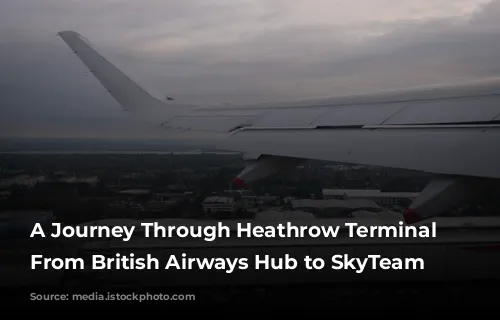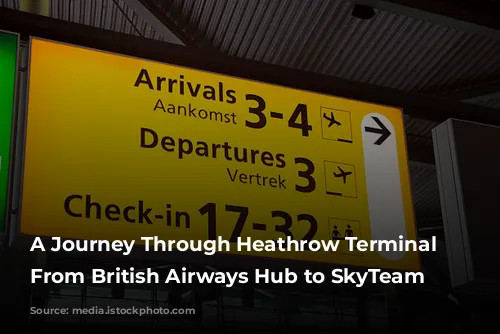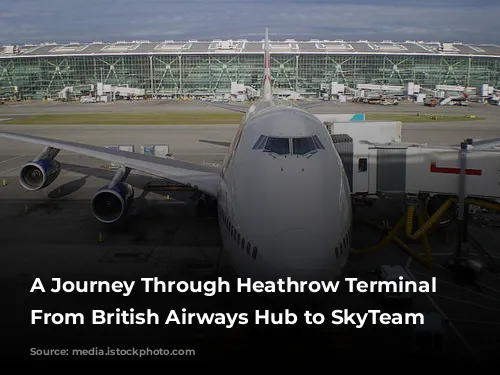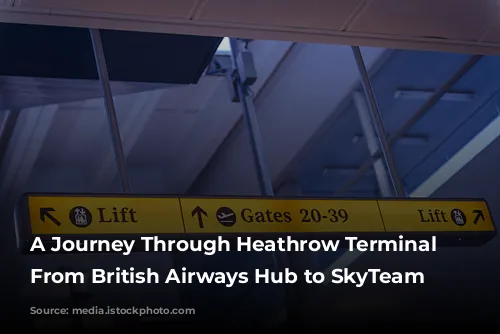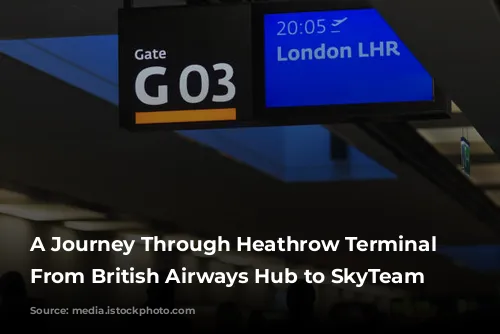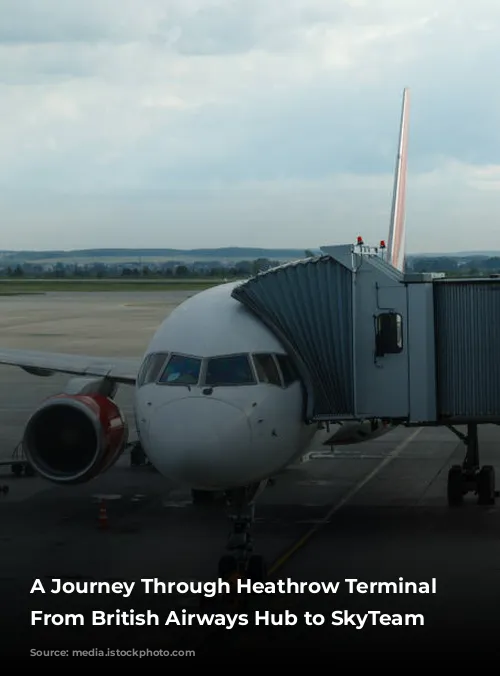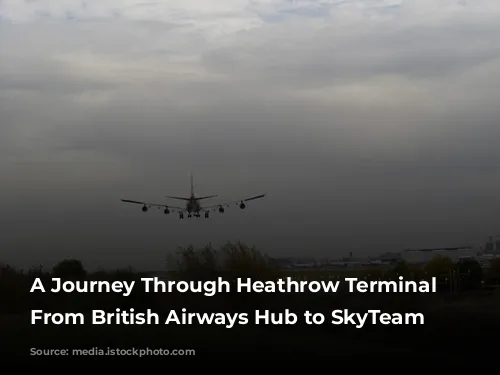Welcome to a deep dive into the history and evolution of Heathrow Terminal 4, one of London’s busiest airport terminals. From its humble beginnings as a dedicated short-haul facility to its present role as a key hub for SkyTeam airlines, Terminal 4 has witnessed significant transformations.
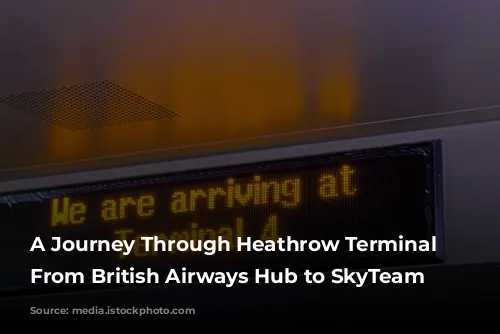
A Dedicated Hub for Short-Haul Flights
Heathrow Terminal 4, located south of the southern runway and adjacent to the cargo terminal, was inaugurated in 1986 with a £200 million investment. This state-of-the-art terminal was envisioned as a solution for short-haul, point-to-point flights, emphasizing swift passenger movement. Its unique layout ensured a rapid transit experience, with boarding gates positioned close to check-in and security areas. The terminal boasted innovative features, including a dedicated arrival and departure segregation and an impressive 0.54km long departure concourse, a testament to its commitment to efficiency.
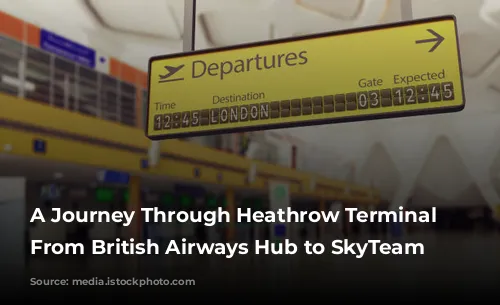
British Airways’ Grand Ambitions and the Terminal’s Limitations
Terminal 4 was initially exclusively dedicated to British Airways, reflecting the airline’s ambitious goal to operate all its flights from a single terminal. This ambition, however, was not realized even with the opening of Terminal 5 in 2008. The terminal’s layout, however, was not ideal for British Airways’ long-haul operations, contributing to the airline’s struggles with operational efficiency. The long distance from the central terminal area and the limited capacity of the gate areas posed significant challenges.
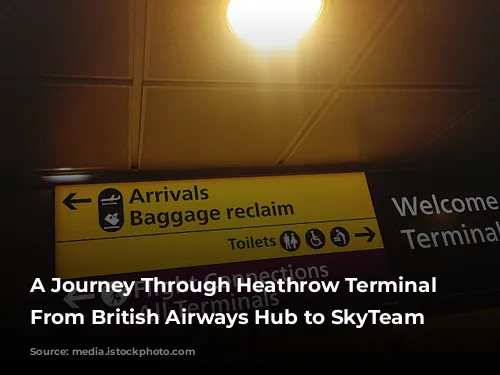
A £200 Million Transformation: Embracing a New Identity
With the transfer of most of British Airways’ operations to Terminal 5 in 2008, Terminal 4 underwent a remarkable £200 million transformation. This extensive renovation repositioned the terminal as the base for SkyTeam airlines, featuring a streamlined departures forecourt for enhanced security and reduced congestion. A new check-in area was added, and the majority of the internal areas were modernized.
The arrival of premium passenger lounges, including a SkyTeam Alliance lounge, an Etihad Airways Lounge, a Malaysia Airlines Golden Lounge, a Gulf Air Golden Falcon Lounge, a Qatar Airways Premium Lounge, and a Plaza Premium Lounge, further elevated the passenger experience. Two dedicated stands for the Airbus A380 were added in 2009, and two more were constructed in 2015, reflecting the growing demand for larger aircraft.
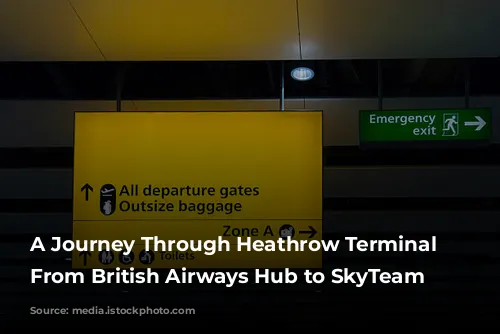
A Terminal Redefined: Adapting to Challenges
The COVID-19 pandemic brought about a temporary closure of Terminal 4 in 2020, resulting in the suspension of rail and underground services to the terminal. However, the terminal reopened in June 2021, solely for passengers arriving from red list countries. In February 2022, Heathrow announced the full reopening of Terminal 4 in time for the summer peak travel season, a testament to its resilience and adaptation.

A Gateway for Diverse Airlines
Today, Terminal 4 serves as the primary hub for SkyTeam airlines, with a few notable exceptions, including Aeroméxico, Delta Air Lines, Middle East Airlines, Virgin Atlantic, and China Airlines. Terminal 4 also welcomes three Oneworld members: Malaysia Airlines, Royal Air Maroc, and Qatar Airways.
Terminal 4 further caters to various non-aligned airlines, including Air Malta, China Southern Airlines, El Al, Etihad Airways, Gulf Air, Oman Air, Royal Brunei Airlines, Air Algerie, Air Astana, Air Serbia, Azerbaijan Airlines, Biman Bangladesh Airlines, Bulgaria Air, Kuwait Airways, Tunisair, Uzbekistan Airlines, Vueling, and WestJet.
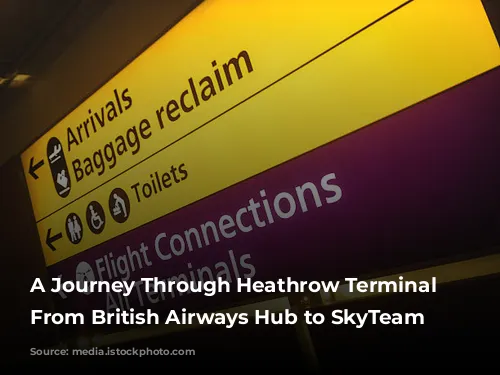
Accessibility and Connectivity
Reaching Terminal 4 is convenient, with access from Junction 14 of the M25 motorway via the A3113 and the Southern Perimeter Road. Travelers from Central London can use the M4, exiting at Junction 3.
The terminal features a short-stay car park directly opposite and a long-stay car park on the other side of the twin rivers.
Terminal 4 enjoys excellent transport connectivity with the London Underground’s Piccadilly line at Heathrow Terminal 4 tube station and the Elizabeth line at Heathrow Terminal 4 railway station. Travel between Heathrow terminals on these lines is complimentary.
For those opting for the Piccadilly line, expect up to six trains per hour, with journeys to central London via Heathrow Terminals 2 & 3 tube station. While fares are cheaper on the Piccadilly line compared to the Elizabeth Line and Heathrow Express, journeys can take longer.
Additionally, Terminal 4 is well-served by local buses, coach services, and car parking options.
In conclusion, Heathrow Terminal 4 stands as a testament to adaptability and innovation, having evolved from a dedicated short-haul facility to a thriving hub for a diverse range of airlines, including the SkyTeam alliance. With its convenient location, modern amenities, and excellent transport connectivity, Terminal 4 continues to play a crucial role in facilitating seamless air travel for millions of passengers worldwide.
